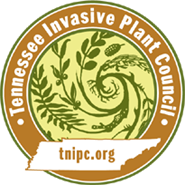Mentha x piperita L.
Peppermint| Category |
|---|
| Forb/Herb |
Description
Stem
An aromatic herb, Peppermint grows to be 18 - 36 inches (45 - 90 cm) tall and about 24 inches (60 cm) wide.Leaves
Leaves are opposite with serrate margins, 4-8 cm long.Flowers
Violet to lavender flowers open from late spring/early summer to midsummer.Fruit
Fruit is a 1-seeded nutlet.Life History
/i>eppermint, Mentha x piperita, is a hybrid resulting from the crossing of Water Mint (M. aquatica) and Spearmint, M. spicata. This culinary herb is cultivated in Europe, North Africa, and the United States. It is used in the production of peppermint oil by distillation. This oil is used to flavor sweets, chewing gum, cordials, liqueurs (e.g., Crème de Menthe), toothpastes, and various pharmaceutical products. Genus name comes from an unfortunate Greek nymph named Mentha who got herself turned into a mint plant and is one of the oldest plant names still in use.Habitat
Mentha x piperita can survive a variety of conditions and locations with good drainage in partial to full sun.Origin and Distribution
Indigenous to Europe and Asia, Peppermint can be found in the following states/provinces: USA (AK, AL, AR, CA, CO, CT, DC, DE, FL, GA, IA, ID, IL, IN, KS, KY, LA, MA, MD, ME, MI, MN, MO, MS, MT, NC, NE, NH, NJ, NV, NY, OH, OK, OR, PA, RI, SC, TN, TX, UT, VA, VT, WA, WI, WV), USA+ (PR), CAN (BC, NB, NS, ON, PE, QC)Synonyms
Mentha aquatica L. var. crispa (L.) Benth.Mentha crispa L.
Mentha dumetorum Schult.
h2. Management Recommendations
Mechanical Controls
Pulling, cutting, and disking.Herbicidal Controls
Established pastures – 5-6L/ha 2,4-D Amine herbicide is the suggested treatment. This will give approximately 60 - 70% control. It has also been found that Pasture-Kleen Xtra herbicide applied at 4-5L/ha is equally effective.Biological Controls
There are no biological control agents available for the management of Mentha. This is likely due to the importance of mints as a crop in some areas of the west, as well as the number of native mints that potentially could be affected by bioagents.Bibliography
USDA, NRCS. 2010. The Plant Database, PLANTS Profile for Mentha x piperita"Encyclopedia of Life":http://eol.org/pages/579698/overview
"BioWeb":http://bioweb.uwlax.edu/bio203/s2009/johnsonnic4/Habitat%20&%20Adaptation.htm
"Encyclopædia Britannica":http://www.britannica.com/plant/Lamiales
"Dave’s Garden":http://davesgarden.com/guides/pf/go/295/
DiTomaso, J.M., G.B. Kyser etal. 2013. Weed control in natural areas in the Western United States. Weed Research and information Center, University of California. 544 pp.
